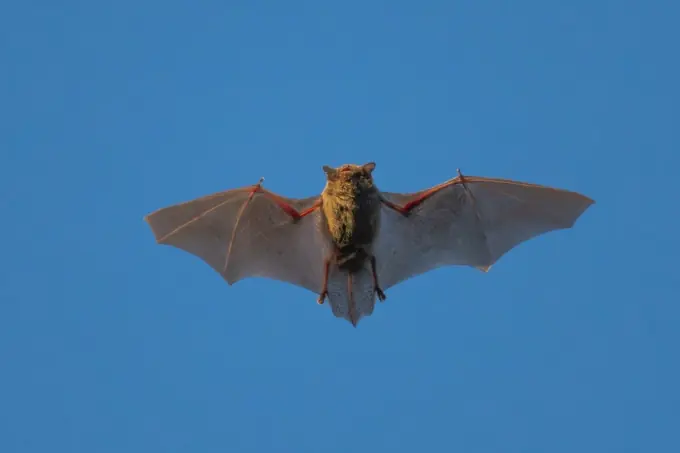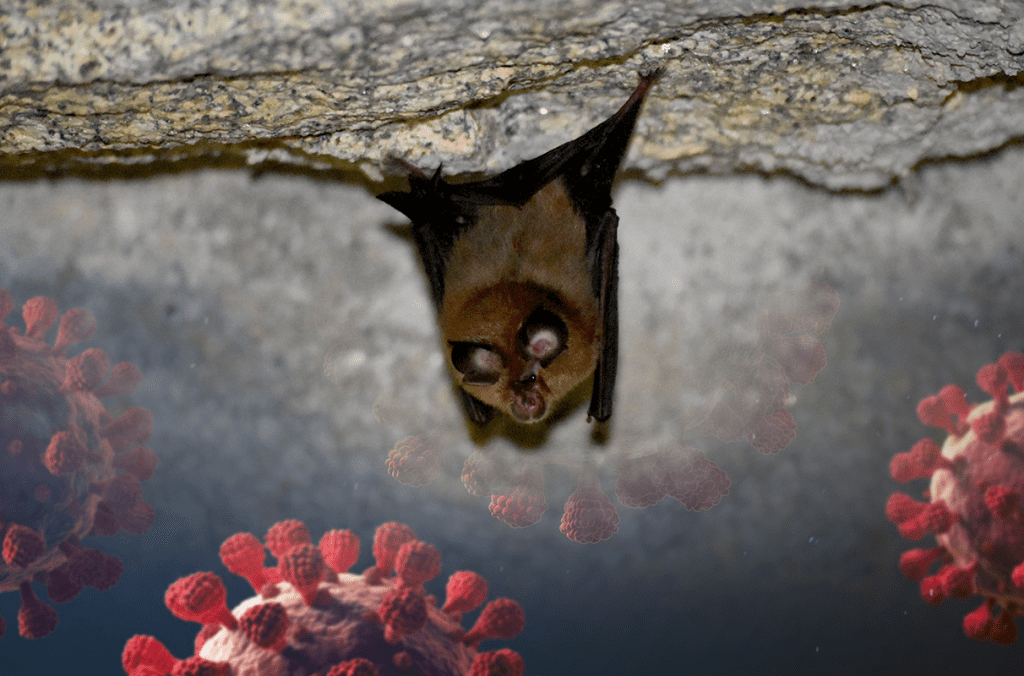A new strain of coronavirus has been discovered in bats, and scientists believe it has the potential to infect humans through the ACE2 receptor—the same entry mechanism used by SARS-CoV-2, the virus responsible for COVID-19. This alarming discovery has raised concerns about the possibility of another zoonotic spillover event, but how serious is the threat?
A New Coronavirus Strain: Meet HKU5-CoV-2

A team of Chinese scientists, led by renowned virologist Shi Zhengli, recently identified a new bat coronavirus named HKU5-CoV-2. It belongs to the Merbecovirus group, which includes the virus responsible for Middle East Respiratory Syndrome (MERS).
Originally detected in Japanese bats in Hong Kong, this strain has now shown the ability to bind to human ACE2 receptors, making human infection a real possibility.
How Does This Virus Infect Humans?
Like SARS-CoV-2, the new virus binds to the ACE2 receptor, a protein found in human respiratory and digestive tract cells. This receptor is a gateway that allows the virus to enter and infect human cells.
Video New Coronavirus Could Infect Humans Via Same Route As Covid-19
Key Findings From Research:
- HKU5-CoV-2 can attach to human ACE2 receptors in a way that suggests potential for cross-species transmission.
- The virus can infect human cells and artificial tissues that simulate the respiratory and digestive systems.
- It shows adaptability across multiple mammal species, increasing the risk of transmission.
While this research confirms that humans are susceptible to this virus, scientists emphasize that its infectivity remains significantly lower than SARS-CoV-2—meaning it’s not an immediate global threat.
What Makes This Discovery Concerning?
Emerging viruses that can jump from animals to humans (zoonotic viruses) pose a major challenge for global health. The more species a virus can infect, the higher the risk of it mutating into a more infectious form.
With MERS, SARS, and now HKU5-CoV-2 all originating from bats, it’s clear that these animals are reservoirs for potentially dangerous coronaviruses. If HKU5-CoV-2 mutates further, it could become more efficient at spreading among humans.
Should We Worry About a New Pandemic?
The scientific community is cautious but not alarmed—at least not yet. While the ability of HKU5-CoV-2 to infect human cells is real, its efficiency in doing so remains low.
Virologists believe that for the virus to become a serious global threat, it would need to undergo genetic changes that increase its ability to transmit between humans. This could happen naturally over time, especially if it finds an intermediate host (like pangolins or civet cats, which played a role in previous coronavirus outbreaks).
Video Another COVID-like pandemic soon? China discovers new deadly bat coronavirus that can infect humans
Comparing HKU5-CoV-2 to Other Deadly Coronaviruses
| Virus | Origin | Ability to Infect Humans | Fatality Rate | Pandemic Risk |
|---|---|---|---|---|
| SARS-CoV-2 (COVID-19) | Bats (via an intermediate host) | Very high | ~1-3% | Global pandemic |
| MERS-CoV | Bats (spread via camels) | Moderate | ~35% | Regional outbreaks |
| SARS-CoV-1 | Bats (spread via civet cats) | High | ~10% | Controlled outbreak |
| HKU5-CoV-2 | Bats | Low (so far) | Unknown | Under study |
As of now, HKU5-CoV-2 does not appear to be as dangerous as COVID-19 or MERS, but continued surveillance is crucial.
The Role of Shi Zhengli and the Wuhan Controversy
Shi Zhengli, often called “Bat Woman” due to her extensive research on bat coronaviruses, has played a significant role in identifying and studying zoonotic threats.
However, her work has also been caught up in controversy. Some theories suggest that SARS-CoV-2 leaked from the Wuhan Institute of Virology, where Shi conducts research. She has strongly denied these claims, insisting that COVID-19 likely originated from bats and jumped to humans through an intermediate species.
Regardless of the origins of past outbreaks, scientists agree that bats remain a major reservoir for emerging coronaviruses—making continued research and monitoring essential.
How Can We Prevent Future Pandemics?

Given the increasing number of zoonotic viruses making their way into humans, proactive measures are needed to reduce the risks of another global health crisis.
Key Strategies for Prevention:
- Early Detection & Monitoring – Strengthening global surveillance systems to detect new viruses before they spread.
- Regulating Wildlife Trade – Limiting human interaction with wild animals that can carry dangerous pathogens.
- Strengthening Public Health Infrastructure – Investing in rapid response capabilities to contain outbreaks.
- Global Collaboration – Countries must share data and research to prevent pandemics.
Final Thoughts: Stay Alert, But Don’t Panic
The discovery of HKU5-CoV-2 is a reminder that viruses continue to evolve, and some have the potential to jump from animals to humans. While this new bat virus can infect human cells, its current ability to spread is low—so an outbreak isn’t likely at this stage.
That said, history has taught us that underestimating viruses can be dangerous. Continued research, public health preparedness, and global cooperation are crucial to ensuring that HKU5-CoV-2 doesn’t become the next pandemic threat.
For now, scientists are watching closely—and so should we.


